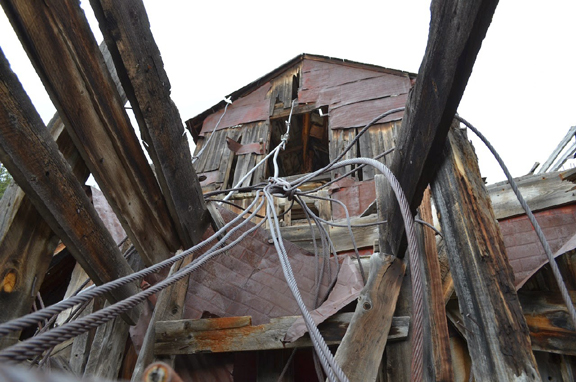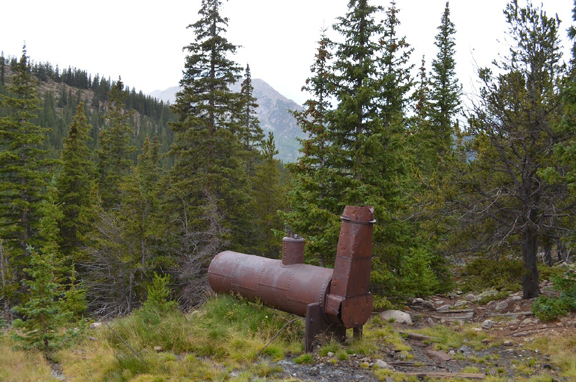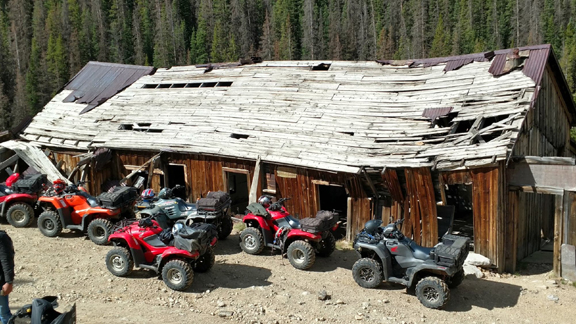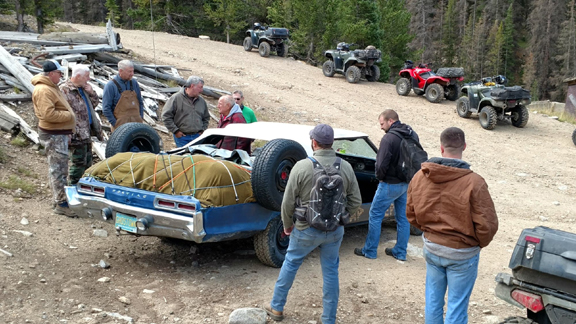![]()
The Mary Murphy Mine was one of 50 mines in the area, however it stood out since it was one of the most successful. In full-time operation, from 1870 to 1925, it is said that it produced more than 220,000 ounces of goldóworth $4.4 million at that time (today that would be roughly a bit more than $180 million). It also produced silver, lead, and zinc. The end of its operation was in 1954. It had an aerial tramway which took buckets of ore attached to a cable from the mine to Romley and to the railroad. The mine, in its hay day, employed over 400 men. The aerial tramway consisted of a single endless cable, strung along a series of wood towers, which are still visible today throughout the forest. The cable carried ore filled buckets from the mine down the steep hillside to the mill for processing. The buckets returned empty back to up the incline to be filled with ore again at the mine. The cable was nearly one mile long and held 96 buckets that were hooked to the cable. Each bucket held about 200 pounds of ore. Two men operated the brakes for the entire tram, and it took around 40 minutes to get the buckets down and up the mountain again for refill. Nearly 128 tons of ore were delivered in a 24-hour period. Most of the Mary Murphy miners were single and lived in company bunkhouses. There were a number of married men who lived with their families at the base of the tramway area in the town of Romley Up until the 80's, many of the buildings and cabins were still present. The British consortium that owned the property bulldozed everything due to liability insurance concerns.

This is the mill at the Mary Murphy Mine

These are the tram cables.

The boiler

A group of ATVs also checked out the Mary Murphy and our Cheap Jeep

The ATV explores were talking with Steve about the Cheap Jeep

This is what remains of the ore loading station.